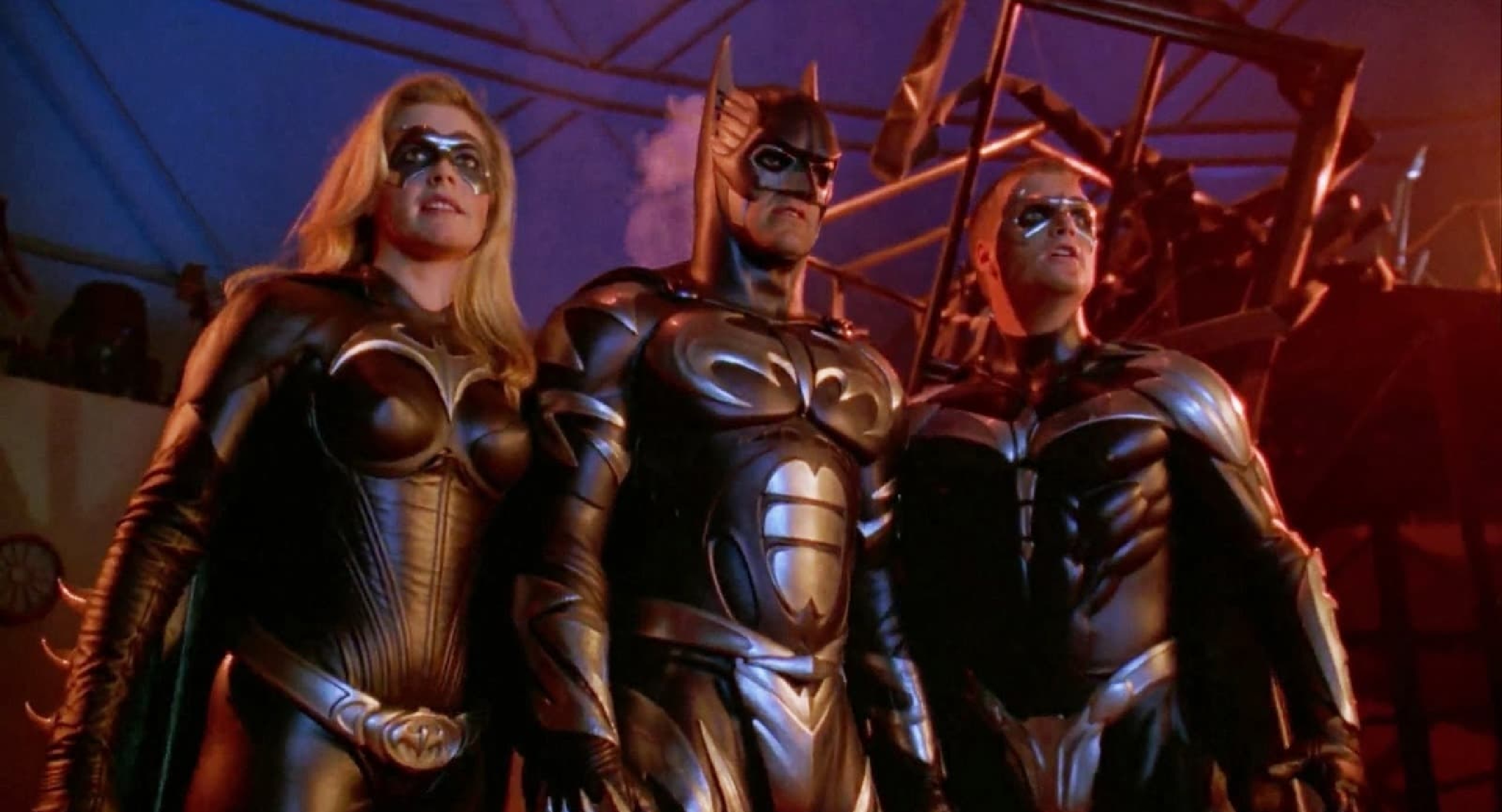Batman & Robin – Film Review
Published May 30, 2023

Joel Schumacher‘s Batman & Robin, released in 1997, is a cinematic catastrophe that truly encapsulates everything wrong with the superhero genre. From its cringe-inducing dialogue to its over-the-top campiness, this film fails on every level, tarnishing the legacy of the Dark Knight and leaving audiences questioning why such a misguided project was ever greenlit.
One of the most glaring issues with Batman & Robin is its complete lack of a cohesive narrative. The film attempts to juggle multiple storylines simultaneously, resulting in a convoluted mess that leaves viewers scratching their heads. The central plot revolves around Batman (George Clooney) and his sidekick Robin (Chris O’Donnell) battling against the diabolical duo of Mr. Freeze (Arnold Schwarzenegger) and Poison Ivy (Uma Thurman). However, the narrative quickly becomes bloated with unnecessary subplots, such as Alfred Pennyworth’s (Michael Gough) deteriorating health and a contrived romantic rivalry between Batman and Robin over the affections of Batgirl (Alicia Silverstone).
The script of Batman & Robin is riddled with cringe-worthy one-liners and puns that would make even the most forgiving viewer wince. Arnold Schwarzenegger’s Mr. Freeze, in particular, delivers a string of ice-related quips that are as groan-inducing as they are ridiculous. It’s a disservice to the character, reducing him to a caricature rather than the menacing villain he should be. Uma Thurman’s Poison Ivy, although visually striking, is saddled with clunky dialogue and an inconsistent portrayal that never truly captures the character’s complexity.
Schumacher’s direction further exacerbates the film’s issues. While he successfully injected a sense of style and grandeur in his predecessor, Batman Forever, here it becomes a garish display of neon-lit excess. The Gotham City of Batman & Robin is a bizarre mishmash of Gothic architecture and neon lights, creating an aesthetic that feels more like a circus than a crime-ridden metropolis. Schumacher’s penchant for overindulgence is evident in every frame, from the excessively flamboyant costumes to the exaggerated action sequences that border on cartoonish.
The performances in Batman & Robin do little to salvage the film. George Clooney, an accomplished actor in his own right, is utterly miscast as Batman. His portrayal lacks the brooding intensity and gravitas that defined previous interpretations of the character. Chris O’Donnell’s Robin is equally disappointing, coming across as more of a whiny teenager than a capable crime-fighting partner. Even esteemed actors like Michael Gough and Pat Hingle, reprising their roles as Alfred and Commissioner Gordon, respectively, seem lost amidst the chaos, given little to do beyond delivering exposition.
The film’s visual effects and production design are a mixed bag. While some of the set pieces are visually impressive, the over-reliance on CGI creates a glaring disconnect between the characters and their surroundings. The Batmobile, once a sleek and imposing machine, is transformed into a garish monstrosity that looks more like a toy than a crime-fighting vehicle. The action sequences, although abundant, lack tension and are filled with excessive slow-motion shots that only serve to highlight the film’s misguided attempt at stylization.
Even the film’s score, composed by Elliot Goldenthal, fails to leave a lasting impression. While the soundtrack attempts to capture the bombastic energy of a superhero film, it ultimately falls flat, lacking the memorable motifs and emotional resonance found in previous Batman scores.
In the end, Batman & Robin is a cinematic disaster that epitomizes everything that can go wrong with a superhero film. Its convoluted narrative, cringe-inducing dialogue, and misguided aesthetic choices make it a painful viewing experience for any fan of the Dark Knight. It’s a shame to see such iconic characters reduced to mere caricatures, with performances that lack depth and substance.
